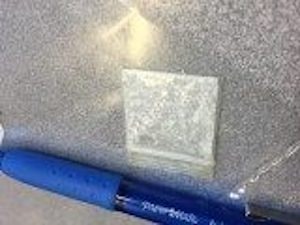Since 1993
When is a Ziploc Bag a Crime? Drug Paraphernalia Charges in Florida

Cops are experts at taking innocent words or conduct and converting them into something criminal—which is why I always recommend you never talk to them without an attorney. But even if you say nothing, the police can still take your innocent household items and transform them into evidence of a crime.
To understand this, let’s take a look at my mom’s kitchen table. She was a very talented artist, so she has little Ziploc baggies everywhere for beads and jewelry. She also has a weekly pill organizer for her medications and a digital scale for weighing postage. To a rookie cop, this scene—tiny baggies, pills outside their original bottle, a digital scale—is an open-and-shut case for a drug paraphernalia arrest. The point is, these items are perfectly legal until drugs enter the picture. Only then can they become “drug paraphernalia.” A recent case takes a closer look at where the legal line is drawn.
Charged with Possession of Drug Paraphernalia in Orlando? A ziplock baggie or a digital scale is not automatically a crime. The State must prove you intended to use it illegally. Call my office to discuss the State’s lack of evidence. Call John Guidry: (407) 423-1117
A Real-World Example: The Case of the Rolled-Up Dollar Bill
The case of Chandler v. State, 41 F.L.W. 861 (Fla. 5th DCA 2/26/2016), began with a traffic stop.
- The Scene: Police found a bag of methamphetamine on the floorboard near the passenger, Mr. Chandler. They also found a rolled-up dollar bill in his wallet.
- The Verdict: A jury found Chandler not guilty of possessing the meth, but they found him guilty of possessing drug paraphernalia for the rolled-up dollar bill.
- The Appeal: Chandler appealed, arguing that a rolled-up dollar bill isn’t a crime. The appellate court agreed and overturned the conviction.
The “Failure of Proof” Defense: The State Must Prove Illicit Intent
How can the State prove an innocent item is actually criminal paraphernalia? The most common way is to test it and find drug residue. But in Chandler’s case, the State presented no evidence that the dollar bill had been tested. The officer only testified that, in his opinion, it was rolled up to inhale narcotics.
The appellate court ruled that the State “offered no further evidence to prove Appellant intended to use the dollar bill for an illicit purpose.” The officer’s opinion alone was not enough. They cited an older case, Williams v. State, 529 So. 2d 345 (Fla. 1st DCA 1988), where a paraphernalia conviction for a digital scale was overturned because the State failed to find any drug residue on it. The State must present actual proof.
John’s Takeaways
- Common household items like Ziploc bags, digital scales, or rolled-up dollar bills are not illegal on their own.
- To be convicted of possessing drug paraphernalia, the State must prove you used or intended to use the object to ingest, package, or otherwise deal with illegal drugs.
- The most common way the State proves this is by testing the item for drug residue.
- As shown in Chandler v. State, an officer’s mere opinion that an item is paraphernalia is not enough to support a conviction without physical evidence of illicit use or intent.
- A skilled defense attorney will challenge the State’s evidence—or lack thereof—to fight these often overcharged cases.
Even if the State does find a trace amount of drugs on a dollar bill, there’s plenty of evidence that most U.S. currency contains trace amounts of narcotics anyway. So, if 85% of all paper currency is contaminated, what does that really prove? It proves that these are complex cases that require a real defense. If you’ve been charged, give me a call and we can talk about it.

About the Author, John Guidry II
John Guidry II is a seasoned criminal defense attorney and founder of the Law Firm of John P. Guidry II, P.A., located in downtown Orlando next to the Orange County Courthouse, where he has practiced for over 30 years. With more than three decades of experience defending clients throughout Central Florida since 1993, Guidry has successfully defended thousands of cases in Orange, Seminole, Osceola, Brevard, Lake, and Volusia counties. He has built a reputation for his strategic approach to criminal defense, focusing on pretrial motions and case dismissals rather than jury trials.
Guidry earned both his Juris Doctorate and Master of Business Administration from St. Louis University in 1993. He is a member of the Florida Bar and the Florida Association of Criminal Defense Lawyers. His practice encompasses the full spectrum of Florida state criminal charges, with a particular emphasis on achieving favorable outcomes through thorough pretrial preparation and motion practice.
Beyond the courtroom, Guidry is a prolific legal educator who has authored over 400 articles on criminal defense topics. He shares his legal expertise through his popular YouTube channel, Instagram, and TikTok accounts, where he has built a substantial following of people eager to learn about the law. His educational content breaks down complex legal concepts into accessible information for the general public.
When not practicing law, Guidry enjoys tennis and pickleball, and loves to travel. Drawing from his background as a former recording studio owner and music video producer in the Orlando area, he brings a creative perspective to his legal practice and continues to apply his passion for video production to his educational content.








